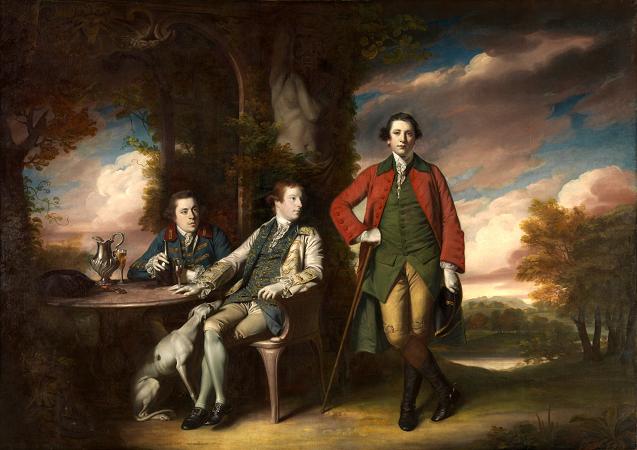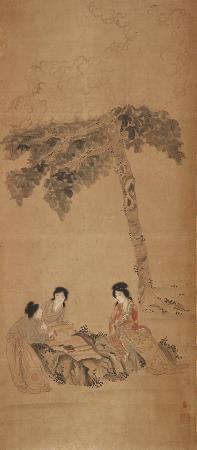Group Portrait. A group portrait is a painting or photograph that depicts two or more people. Group portraits have been a popular subject in art for centuries, often capturing the likeness and relationships of individuals within a family, social group, or historical moment. They can range from intimate family portraits to grand historical compositions. Group portraits allow artists to explore themes of identity, social hierarchy, and human connection. Three significant artists known for their group portraits include Diego Velázquez, Rembrandt van Rijn, and John Singer Sargent. Velázquez's Las Meninas is a masterpiece of Baroque portraiture, showcasing his mastery of composition, light, and space. Rembrandt's Anatomy Lesson of Dr. Nicolaes Tulp is a dramatic and detailed depiction of a public anatomy lesson. John Singer Sargent's The Daughters of Edward Darley Boit is a striking example of his ability to capture the individuality and personality of his subjects. Other notable examples include Arnolfini Portrait by Jan van Eyck, which depicts a wealthy couple in a richly detailed interior, Wedding Feast at Cana by Paolo Veronese, a monumental Renaissance painting that depicts a biblical scene with numerous figures, and Third of May 1808 by Francisco Goya, a powerful and disturbing depiction of the Spanish resistance against Napoleon's troops. A portrait is a painting, photograph, sculpture, or other artistic representation of a person, in which the face is always predominant. In art, a portrait can be represented as half body and even full body. If the subject in full body better represents personality and mood, this type of presentation may be chosen. The intent is to display the likeness, personality, and even the mood of the person. For this reason, in photography a portrait is generally not a snapshot, but a composed image of a person in a still position. A portrait often shows a person looking directly at the painter or photographer, to most successfully engage the subject with the viewer, but portrait can be represented as a profile and 3/4. Prehistorical portraiture See also: Prehistoric art Plastered skull, Tell es-Sultan, Jericho, Pre-Pottery Neolithic B.C. Plastered human skulls were reconstructed human skulls that were made in the ancient Levant between 9000 and 6000 BCE in the Pre-Pottery Neolithic B period. They represent some of the oldest forms of art in the Middle East and demonstrate that the prehistoric population took great care in burying their ancestors below their homes. The skulls denote some of the earliest sculptural examples of portraiture in the history of art. Historical portraiture Main article: Portrait painting Roman-Egyptian funeral portrait of a young boy Most early representations that are clearly intended to show an individual are of rulers, and tend to follow idealizing artistic conventions, rather than the individual features of the subject's body, though when there is no other evidence as to the ruler's appearance the degree of idealization can be hard to assess. Nonetheless, many subjects, such as Akhenaten and some other Egyptian pharaohs, can be recognised by their distinctive features.
more...














